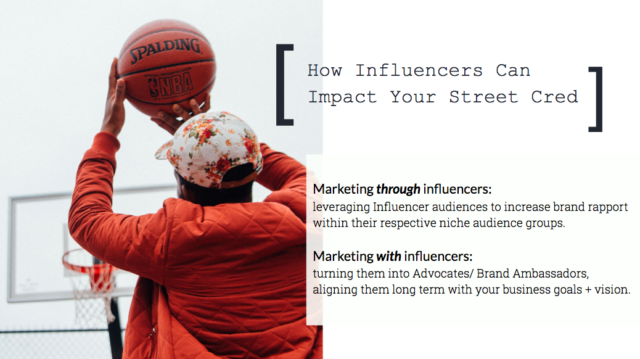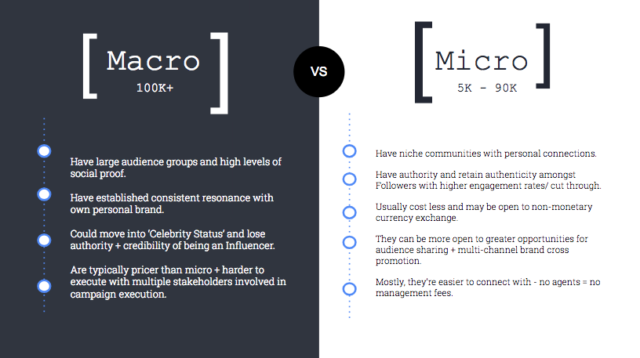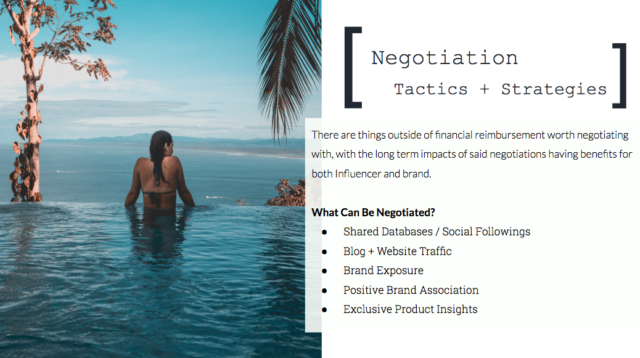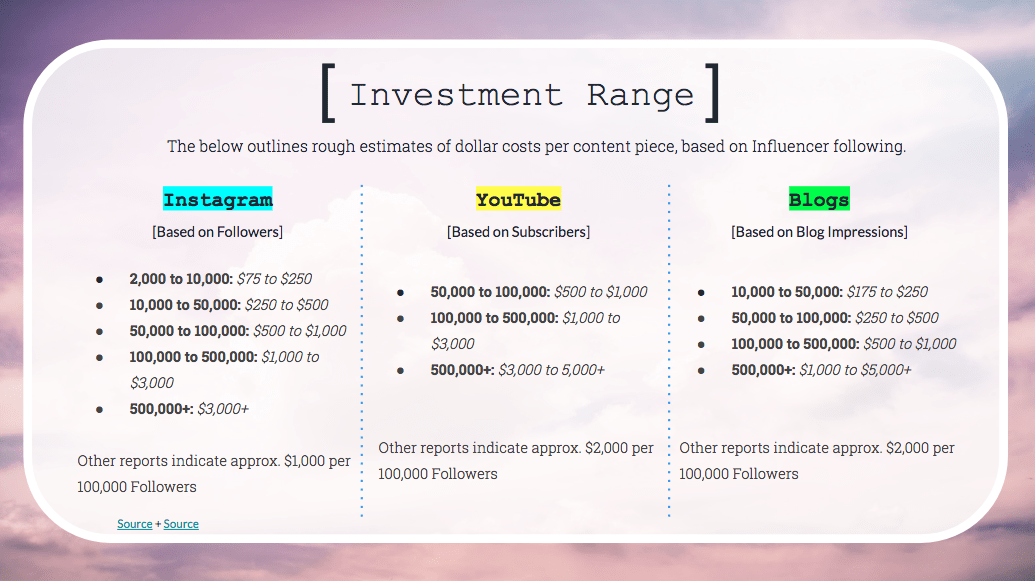Table of contents
In 2018, one of the hottest topics in the social space has been the continued rise of influencer marketing and its positive impact on audience rapport and positive brand association.
But if you get caught up in this hype machine, you can easily neglect the insight required to ensure the investment is actually worth the effort.
So, I thought it would be helpful to demystify a few of the key challenges to keep in mind when embracing this exciting opportunity. Let’s dive right in, shall we?
For definition purposes, let’s clarify what “Influencer Marketing” actually is…
Most would define Influencer Marketing as working with an individual or publisher with the ability to influence potential buyers by promotion or recommendation.
While B2C influencer marketing has been popular for decades, B2B influencer marketing has developed its own set of tactics in the last 5 years.
Today, the majority of this amplification occurs across digital channels, such as YouTube, Instagram, or personal blogs.
So, with all the hype around amplification options, do you know what key elements should be considered before investing your time and resources?
1. Aim to achieve a specific goal
Without a goal, you can’t score – plain and simple. With this in mind, marketing leaders often set more than one goal to consider any campaign a success. The essential ingredient to any Influencer Marketing initiative is to know your goal and how it will be measured. Once you’ve got that, you can reverse-engineer the strategy to complement the outcome you aim to achieve. You can easily track your campaign ROI with the help of a marketing dashboard in real-time.

2. Target a specific audience
It’s all well and good to want everyone to know your brand and what it is you actually stand for. But, in the effort to discover the best approach to an Influencer Marketing strategy, you need to define:
- the core characteristics of this audience group you’re looking to engage and educate
- what content works well on the influencer’s platform of choice
Consequently, defining a specific target audience will ultimately narrow the Influencer selection process.

PRO TIP: How Are Users Engaging on My Site? Which Content Drives the Most Online Activity?
If you want to discover how visitors engage with your website, and which content drives the most engagement and conversions, there are several on-page events and metrics you can track from Google Analytics 4 that will get you started:
- Sessions by channel. Which channels are driving the most traffic to your website?
- Average session duration. How long do visitors spend on your website on average?
- Pageviews and pageviews by page. Which pages on your website are viewed the most?
- Total number of users. How many users engaged with your website?
- Engagement rate. Which percentage of your website visitors have interacted with a piece of content and spent a significant amount of time on the site?
- Sessions conversion rate. How many of your website visitors have completed the desired or expected action(s) and what percentage of them completed the goals you’ve set in Google Analytics 4?
And more…
Now you can benefit from the experience of our Google Analytics 4 experts, who have put together a plug-and-play Databox template showing the most important KPIs for monitoring visitor engagement on your website. It’s simple to implement and start using as a standalone dashboard or in marketing reports!
You can easily set it up in just a few clicks – no coding required.
To set up the dashboard, follow these 3 simple steps:
Step 1: Get the template
Step 2: Connect your Google Analytics account with Databox.
Step 3: Watch your dashboard populate in seconds.
3. Create an offer for your campaign
To effectively engage with ultimate force, create an offer that will be the centerpiece of your campaign with a specific influencer. It should include a direct call to action which showcases intent from your target audience group.
For example, if you’re using an influencer to promote a special offer with an exclusive coupon code (which is extremely trackable), you’ll be able to view the direct reach and resonance you have gained through the audience of any individual influencer. With that in mind, if you are able to engage multiple influencers, you can split test the impact of each one and identify the top performers with the help of a marketing dashboard software. Later, you will know which ones to re-engage in ongoing marketing collaborations.
A few other ways to track impact could also be:

4. Choose between micro- and macro-influencers?
Ah, the great debate. There are serious benefits to both options in this instance. Ultimately, your decision here should come down to the following factors:
- What is your campaign budget?
- Does your product resonate with niche or larger social communities?
- What is the general engagement level for the Influencers you’ve shortlisted? Do they consistently engage with their respective communities and is it organic?
- Are they dishing out brand shoutouts every second day (and as a result, losing credibility for their recommendations) or are they selective with their collaborations?
- How flexible are their agreement terms and content turnaround times?
Once the above has been confirmed, you’ll be able to make the best decision for your brand campaign and the Influencer you choose to invest in.

5. Know your options for terms and payment
The selection you make in stage 4 will often determine not only the investment level in terms of dollars, but the flexibility and negotiation options your influencer will expect. Based on my experience, there’s serious value in negotiating with deliverables that are mutually beneficial to both your campaign and the influencer themselves, such as:
- Shared Databases/ Social Followings
- Blog + Website Traffic
- Brand Exposure
- Positive Brand Association
- Exclusive Product Insights
Typically, micro-influencers (that is, any influencer with a following ranging between 5,000 or 90,000) could be more flexible in negotiating some sort of compensation in place of cash, as they can also avoid management or agent costs tied to the jobs they take on.

6. Define clear terms and deadlines
More than anything, it’s really important to remember that you’re collaborating with a person. Although your company may decide between spending money on influencer marketing and a paid media campaign, an influencer will not accept any campaign that resembles paid media. They must think and speak for themselves in order to maintain their own personal brand aesthetic.
Navigating clear deadlines and deliverables is essential to project managing any Influencer Marketing initiative. This should be outlined in a contractual agreement.

7. Get creative and have fun with it!
The beauty of this amplification channel is the personified touch it adds to your brand and the credibility it offers (compared to traditional paid digital streams).
You might think that only your customers could offer this level of brand advocacy. But, influencer open up a new way to share your story in a genuine way. You can’t get this level of authenticity from an internal brand representative.

So, to round things up, key considerations for your next Influencer Marketing strategy should be:
- Set clear goals for the campaign
- Know your target market
- Create an attractive campaign offer
- Negotiate terms + payment
- Set a campaign budget
- Be clear on the deliverables you set for the Influencer
- Get creative + have fun with it!
I hope this update has shed light on all of your questions on influencer marketing and the positive impact it could have on your brand. I’d be keen to hear your take on what I’ve shared in the comments section below.
The image below sets a bit of context for any questions you might have around reasonable Influencer costs based on audience sizes and platform presence:
















